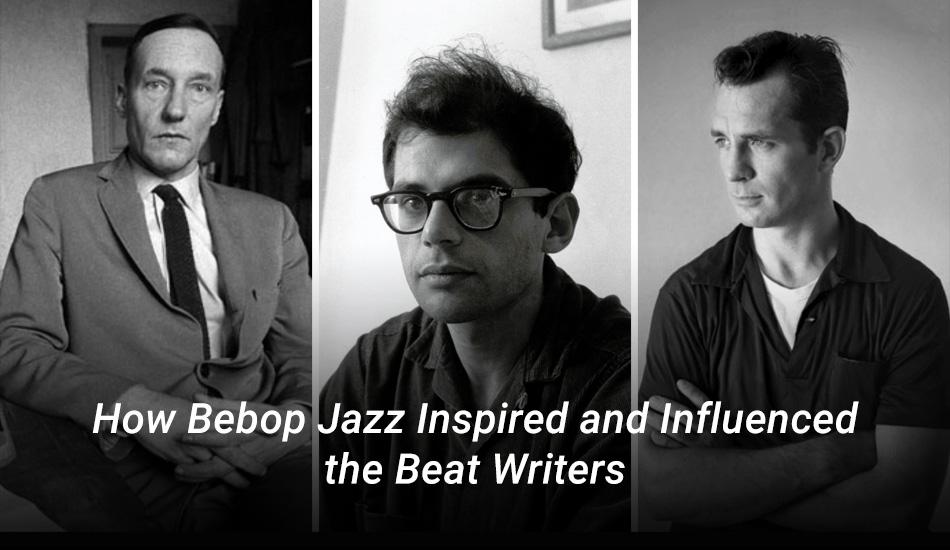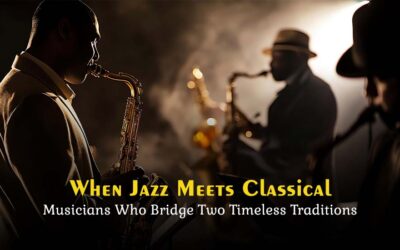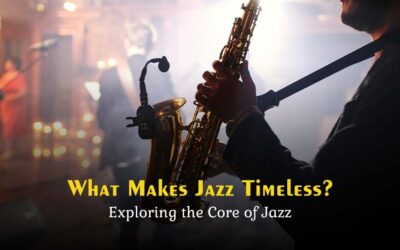The Beat Generation wordsmiths of the 1950s, like Jack Kerouac, Allen Ginsberg, and William S. Burroughs, were heavily swayed by the fresh bebop form of jazz that emerged in the 1940s. The unplanned, fast-tempo, and improvised essence of bebop reflected the rule-bending experimentalism of the Beat writers.
What is Bebop Jazz?
Bebop was a revolutionary new take on jazz music pioneered by musicians like Charlie Parker, Dizzy Gillespie, Thelonious Monk, and Miles Davis in the early 1940s. It moved away from the structured big band swing music popular at the time towards a more improvisational and complex harmonic and rhythmic language.
Bebop musicians played much quicker tempos and introduced new advanced harmonic ideas like ninth chords and chromaticism. The melodic lines became intricate and angular, while the rhythm section kept a driving beat. Soloists would improvise long streams of notes and explore new experimental harmonies.
The Architects of Bebop
Bebop was developed by young African-American jazz musicians in New York City who wanted to advance the artistic and technical possibilities of jazz. The original bebop musicians jammed late into the night at after-hours clubs in Harlem like Minton’s Playhouse, experimenting and honing their innovative new style.
Charlie Parker, also known as “Bird,” was the father of bebop and one of its greatest innovators. His blindingly swift runs completely redefined saxophone technique. Dizzy Gillespie was another bebop pioneer who helped shape its complex harmonies and rhythms. He also popularized the bent trumpet.
“Catbirds like Charlie Parker, with smokin’ sax squeals on primo jazz music songs like ‘Ko Ko’, and Dizzy Gillespie, with his mellow muted trumpet wailing on the killer tune ‘A Night in Tunisia’, cooked up some of the baddest and most grin-inducing best jazz songs in the bebop era.”
Other bebop innovators like Thelonious Monk, Bud Powell, and Kenny Clarke contributed groundbreaking new approaches to harmony, rhythm, and melody that paved the way for modern jazz.
Key Characteristics of Bebop
Some of the key elements that define the bebop style include:
- Fast tempo and asymmetric phrasing
- Intricate, angular melodic lines
- Complex extended chords and harmonies
- Adventurous improvisation and rhythmic variety
- Syncopated accents and uneven phrases
- Sax, trumpet, and piano featured as lead instruments rather than big band arrangements
- Small combo lineups usually number seven players or fewer
- Concentration on instrumental virtuosity and improvisation
This spontaneous bop aesthetic was a major break from the structured big band era and opened up new horizons for jazz.
The Famous Beat Poets
- The Beat Generation writers like Jack Kerouac, Allen Ginsberg, and William S. Burroughs embraced the countercultural spirit of bebop and its freeform creative energy.
- Jack Kerouac even references Charlie Parker and other jazz musicians in his seminal Beat novel, On the Road. The ecstatic, improvisational quality of his prose was directly inspired by listening to bebop.
- Allen Ginsberg read his groundbreaking poem Howl at the Six Gallery in San Francisco while accompanied by jazz saxophone player Walter P. Carter Jr. The long cadences and rhythms of his poetry are shaped by the bebop influence.
- William S. Burroughs also adopted the nonlinear, collapsed narratives of bebop into his novels like Naked Lunch. The surreal flow of his “cut-up” writing technique mirrors a bebop solo.
Conclusion
Bebop’s rebel soul and explosive creativity left a deep mark on the Beat writers as they forged their own new literary territory and gave voice to the Beat generation. The jazz club became the literary salon of the age. So bebop jazz, with its blazing speed, harmonic complexity, and improvisational spirit, was the primary jazz style that inspired the visionary poets, writers, and minds of the Beat generation in the 1950s. They took that spontaneous bop energy and transformed it into their own groundbreaking literary style and works.




